Shooting Times, September 2009, p. 64 – 67
By Paul Scarlata, Vintage Arms Editor
Photos By Nathan Raynolds And Jane Bowie

(Top) Sleek and capable, Kahr’s diminutive .380 ACP is bound to be a favorite of law enforcement and carrying citizens alike.
(Right) The P380’s magazine holds six rounds of .380 ACP ammunition. With one in the chamber, that makes total firepower two rounds more than most snubnosed personal-protection revolvers.
Despite its small grip and light weight, the author found the super-compact P380 to be a very comfortable pistol to shoot.
Small handguns—sometimes known as hideout, backup, or belly guns—have had a checkered career and reputation. The first famous one was the Derringer, a tiny, single-shot percussion pistol that fact and legend associates with riverboat gamblers, ladies of the night, and presidential assassinations. It was followed by small caliber single- and double-barreled handguns and, later, small revolvers known as “Suicide Specials.” In the 20th century, small, easily concealable pistols and revolvers were dubbed “Saturday Night Specials,” and the antigun crowd claimed they were a threat to the very fabric of society.
Despite the less than savory reputation this class of firearms has been cursed with, they are some of the most useful and popular of all handguns. And the reasons for this popularity are easy to understand because they are exactly the type of firearm you are likely to have on you when you need one—and need it very badly.
To address this ever-growing market, Kahr Arms recently introduced a super-compact pistol, the P380. As its name indicates, Kahr’s new pistol is chambered for the .380 ACP (a.k.a. 9mm Browning Short, 9mm Kurz), which is considered by many to be the smallest caliber that is suitable for defensive purposes.
Kahr offers a very complete line of compact and subcompact pistols, and the company is perhaps best known for one of the smoothest, lightest, and stage-free double-action-only (DAO) trigger systems available. A trigger stroke of approximately 0.7 inch rotates a cam that unlocks the spring-loaded striker safety, withdraws and pulls the striker to fullcock, and then releases the striker to fire the pistol.
There are no external safety devices on Kahr pistols. Instead, a striker block immobilizes the partially cocked striker from any movement, and it can only be deactivated by squeezing the trigger through a complete stroke. Because of this, Kahr pistols have a snag free exterior—a very nice feature for a pistol meant to be carried and drawn from concealment.
Unlike many .380 pistols, the P380 is a locked-breech design, which allows it to be smaller and lighter than blowback-operated .380 pistols. Locking is accomplished by the barrel hood bearing on the front edge of the ejection port. Upon firing, the slide moves rearward, and a cam on the barrel lug pulls the barrel down, unlocking it from the slide, which continues rearward, extracting and ejecting the spent case. A recoil spring, located on a full-length guide rod under the barrel, pulls the slide forward, stripping a round from the magazine, chambering it, and camming the barrel hood up into the ejection port.
An offset barrel is used, with the trigger mechanism located beside—instead of under—it, which allows a frame with a high grip close to the centerline of the bore, effectively enhancing recoil control and reducing muzzle flip and felt recoil. A self-cleaning extractor forces powder residue away from the extractor to prevent fouling buildup.
With an overall length under 5 inches and a weight of less than 10 ounces, the P380 is truly a super-compact pistol. Thanks to its thin cross section (0.75 inches), it can be concealed almost anywhere. The magazine holds six rounds, which means the pistol’s fully loaded capacity is seven rounds—two more than the traditional snubnosed revolver.
Kahr’s Frank Harris kindly provided me with an early-production P380 to evaluate. All Kahr pistols have the exact same operating drill, and once you know how to use one, you know how to use them all. Made from the finest materials, the P380 shows a great deal of attention to manufacture, assembly, and fitting.
As I can see no relevance in attempting to shoot little groups from a rest with this type of handgun, I set up a D-1 target at 5 yards, and my girlfriend Jane and I proceeded to put it through a series of drills, firing it both supported (two-handed) and unsupported (one handed).
The P380’s double-action trigger was a delight, and we were able to put most of the rounds into one ragged hole in the target’s X-ring. I ran about 170 rounds of three different .380 ACP loads through it in two shooting sessions, and regardless of bullet shape or ballistics, the pistol ate up whatever I stuffed in the magazine and spat out the empty cases.
Velocities averaged from 970 fps with 80-grain bullets to 800 fps with 95-grainers—certainly respectable from such a compact handgun. Despite its tiny grip, recoil control was very good, and unlike most pistols of this class, the sights were easy to find and fast to align.
I carried the P380 daily for several weeks and found that I could conceal it almost anywhere upon my person. I found it convenient to slip the little semiauto behind my wallet in the back pocket of my pants where it was fully concealed yet could be drawn quickly.
Do I have any criticisms about the new Kahr? Only one: I would like to see Kahr offer an extended magazine for it. Kahr does this with its subcompact 9mm and .40 pistols, and it not only provides higher cartridge capacity, it permits a full, three-finger grip for improved control. And it does this without sacrificing concealability.
I like the new Kahr P380 and can recommend it without hesitation. It is a lightweight, concealable handgun that fires a (semi) serious cartridge. In the best tradition of the Derringer, it will do what’s needed for police service or personal protection.

